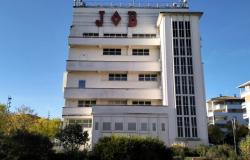Since Monday, November 4, cars are no longer allowed to drive in the city center of Paris. The capital has implemented a “limited traffic zone” in the first four districts. This means that cars and other motorized vehicles are no longer allowed to pass through this area, unless they are stopping for a medical appointment, dropping someone off, making a purchase or living in the neighborhood. . Buses, taxis and ambulances are not affected.
In France, Nantes and Grenoble have similar zones, you cannot drive in certain streets without having a permit to drive there, at the risk of being fined up to 135 euros.
According to a count carried out in 2019 by Ademe, the ecological transition agency, there were 238 limited traffic zones (ZTL) in eight European countries.
The one with the most, by far, is Italy, which has the overwhelming majority of limited traffic zones. The country was a pioneer since the first appeared in the 1970s. At the time it was not to encourage the use of public transport, but rather to protect the historical heritage of city centers, such as in Florence. or in Siena. But from the 1990s, many cities followed. Today, the largest, Milan, Turin and even Rome, have limited traffic zones during at least certain times of the day.
Elsewhere, they also exist, but they are not that numerous. According to the count carried out by Ademe a few years ago, we can cite Barcelona in Spain and Salzburg in Austria. Other large cities include Ghent in Belgium, and the capitals of Latvia and Slovenia, Riga and Ljubljana. London, for its part, has a slightly different system for limiting the number of cars in the city: there is an urban toll, which is quite expensive (a little more than 18 euros per day) for cars entering the city center. .
If we look at Italy, where limited traffic zones have already existed for several decades, the results are rather positive. This is what a study by Cerema, the center for environmental studies and expertise, shows. He notes in particular that in these more pedestrianized cities, residents take less car and more public transport, which generally goes faster.






